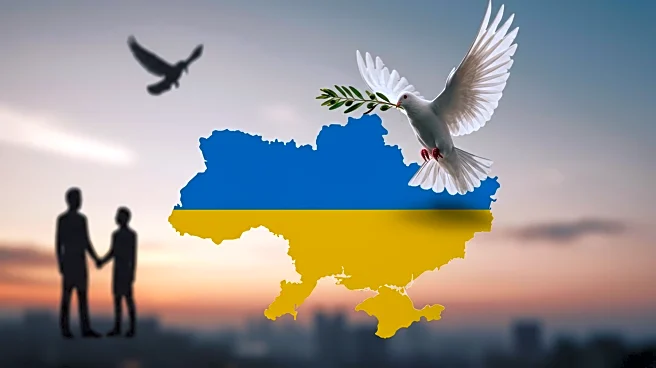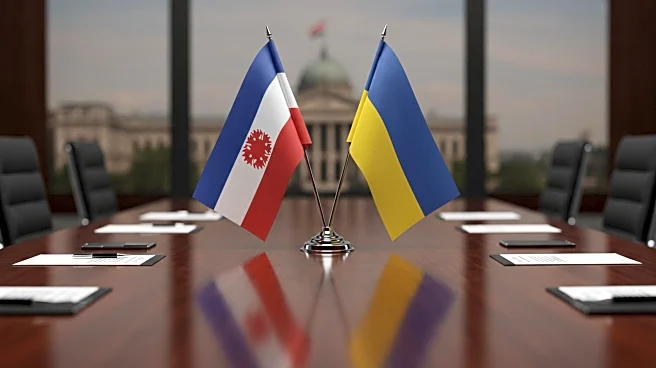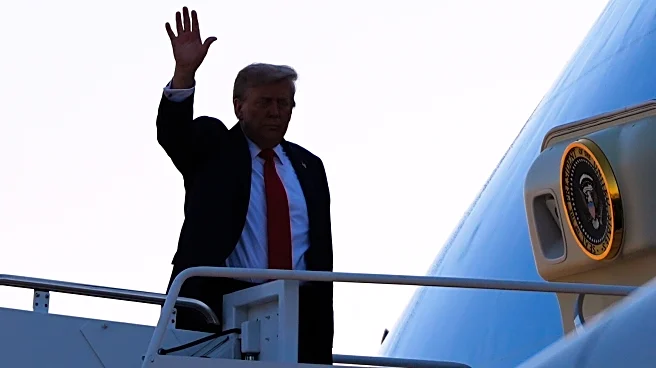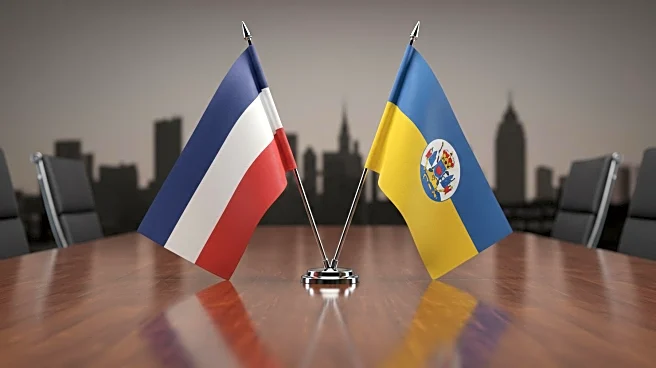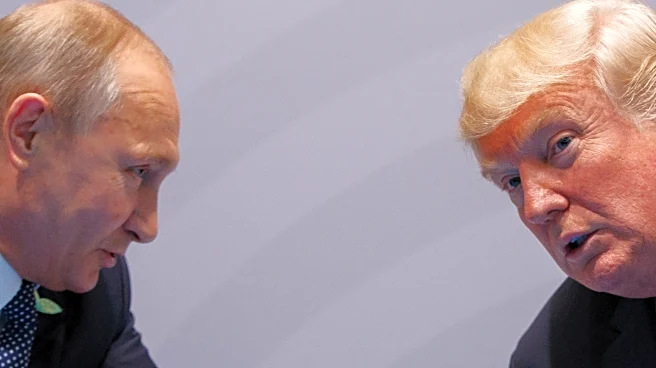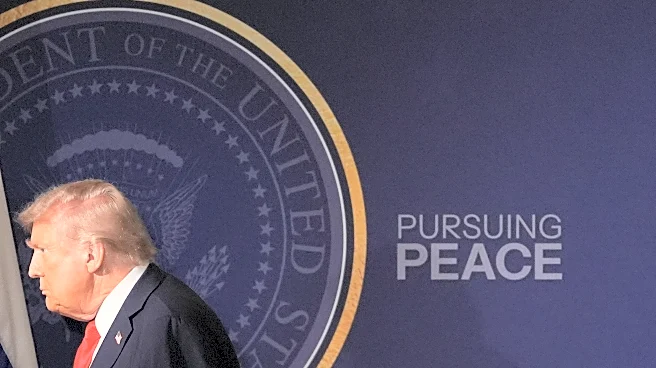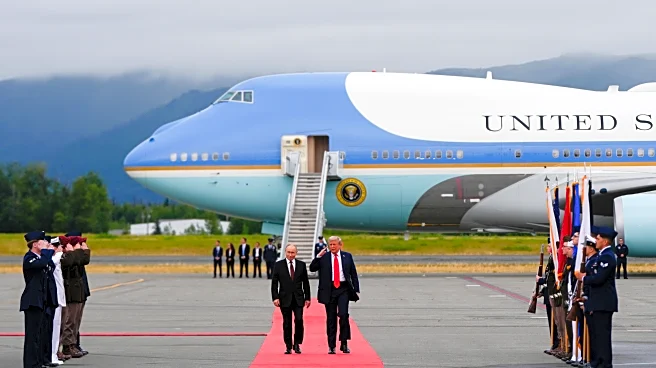What's Happening?
President Donald Trump has announced a proposal for a 'Peace Agreement' to end the ongoing conflict in Ukraine after a summit with Russian President Vladimir Putin in Alaska. This marks a shift from his previous calls for a ceasefire, raising concerns among European leaders about Trump's alignment with Putin's stance. Trump communicated with Ukrainian President Volodymyr Zelenskyy and European leaders, emphasizing the need for a peace agreement rather than a ceasefire, which he believes often fails to hold. European leaders have reiterated that territorial changes cannot be achieved through force, and analysts warn of potential negative consequences if Trump's approach aligns with Russian demands.
Why It's Important?
The shift in President Trump's approach to the Ukraine conflict could have significant implications for international relations and security in Europe. If Trump's stance aligns with Putin's demands, it may undermine Ukraine's territorial integrity and sovereignty, potentially destabilizing the region further. European leaders are concerned about the precedent this could set for resolving conflicts through negotiations that may favor aggressor nations. The situation also highlights the complexities of diplomatic negotiations and the challenges in balancing national interests with international security.
What's Next?
Ukrainian President Zelenskyy is scheduled to visit Washington for further discussions with President Trump. European leaders have emphasized the importance of including Ukraine in any peace negotiations and ensuring that Ukraine's territorial decisions remain sovereign. The outcome of these discussions could shape the future of the conflict and influence the geopolitical landscape in Europe. Observers are closely watching for any changes in Russia's demands and the potential impact on Ukraine's aspirations for EU and NATO membership.
